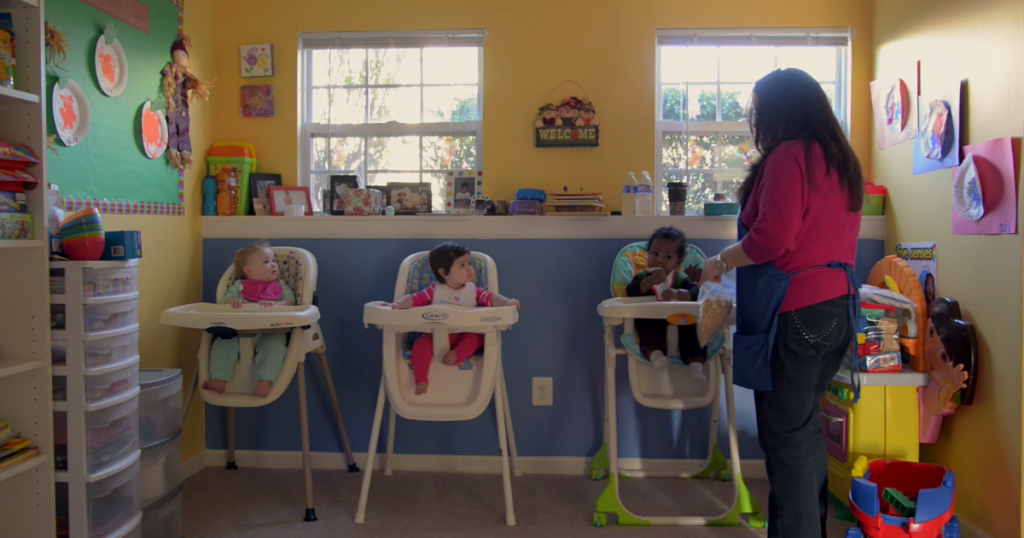Federal Child Care Funding Supports Home-Based Child Care
This blog post is part of a joint effort between First Five Years Fund, Bipartisan Policy Center, and the Center for American Progress.
Chrissie Davis is the owner and operator of a family child care program in Skowhegan, Maine, a rural town of about 8,200 people. Chrissie’s day begins at 5:30 am to prepare for children’s arrival and ends 12 hours later, after the children have departed and paperwork is complete. Despite long hours, Chrissie has been a child care provider for 18 years and says what keeps her going is the desire to shape children’s socio-emotional development and get them started on the right track when they start school. The hardest part of her job has nothing to do with the children in her care, but the struggle to stay afloat as a small business owner.
Half of the families with children in Chrissie’s care receive child care subsidies, through Maine’s Child Care Subsidy Program, which is funded by the federal Child Care and Development Block Grant, or CCDBG. Recently, the program made it easier for Chrissie to operate her family child care and keep her doors open to the families that rely on her to go to work each day.

That’s because in 2018, Congress approved the largest-ever increase in federal child care funding. The additional $5 billion in funding means that states can serve more families, improve quality, and increase payment rates so that parents have more options and child care providers can afford to operate. In Maine, family child care providers receive an additional $2,000 per year for infants and toddlers and an additional $1,250 for preschoolers.
For family child care providers like Chrissie, it means she can afford to continue to enroll 12 children and employ an assistant. Otherwise, she would consider enrolling just 8 children which allows her to be the sole provider. Chrissie would also like to increase wages for her assistant who currently makes minimum wage, but whose caliber of work is worthy of a much higher wage.
In Maine and across the country, child care plays a critical role for families in rural areas that lack center-based options. Approximately 60 percent of families living in rural communities live in a child care desert, with limited options for licensed child care. Family child care homes can help fill this gap. In many states, family child care is a major part of the child care subsidy system. In 25 states, more than one in four children receiving a child care subsidy attends family child care. Not surprisingly, this is particularly true of states where large swaths of the population live in rural communities. North Dakota, Oregon, Kansas, and Montana have the greatest proportion of children receiving child care subsidies in family child care homes. Chrissie currently turns away about five families each week because she doesn’t have space, so it is critical to Maine families that she and other family child care providers have the resources to operate at maximum capacity.
Beyond Maine, increased federal funding for child care is supporting family child care. In Idaho, South Dakota, Pennsylvania, and Wisconsin, family child care providers received an increase of up to $1,400 per child. Families in these states will likely see more family child care providers accepting child care subsidies, giving parents more options and improving the financial viability of these small businesses.
Earlier this year, the House Appropriations Committee approved another $2.4 billion for child care funding. The next step is for Congress to agree on spending levels that accommodate additional child care funding. Additional funds are duly needed, especially for family child care and in rural and frontier states that rely on these providers.
Subscribe to FFYF First Look
Every morning, FFYF reports on the latest child care & early learning news from across the country. Subscribe and take 5 minutes to know what's happening in early childhood education.


